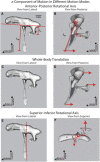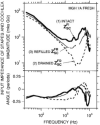Mammalian middle ear mechanics: A review
- PMID: 36299283
- PMCID: PMC9589510
- DOI: 10.3389/fbioe.2022.983510
Mammalian middle ear mechanics: A review
Abstract
The middle ear is part of the ear in all terrestrial vertebrates. It provides an interface between two media, air and fluid. How does it work? In mammals, the middle ear is traditionally described as increasing gain due to Helmholtz's hydraulic analogy and the lever action of the malleus-incus complex: in effect, an impedance transformer. The conical shape of the eardrum and a frequency-dependent synovial joint function for the ossicles suggest a greater complexity of function than the traditional view. Here we review acoustico-mechanical measurements of middle ear function and the development of middle ear models based on these measurements. We observe that an impedance-matching mechanism (reducing reflection) rather than an impedance transformer (providing gain) best explains experimental findings. We conclude by considering some outstanding questions about middle ear function, recognizing that we are still learning how the middle ear works.
Keywords: eardrum; kinematics, mechanics; ligaments; middle ear; muscles; ossicles; synovial joints.
Copyright © 2022 Ugarteburu, Withnell, Cardoso, Carriero and Richter.
Conflict of interest statement
The authors declare that the research was conducted in the absence of any commercial or financial relationships that could be construed as a potential conflict of interest.
Figures













References
Publication types
LinkOut - more resources
Full Text Sources

